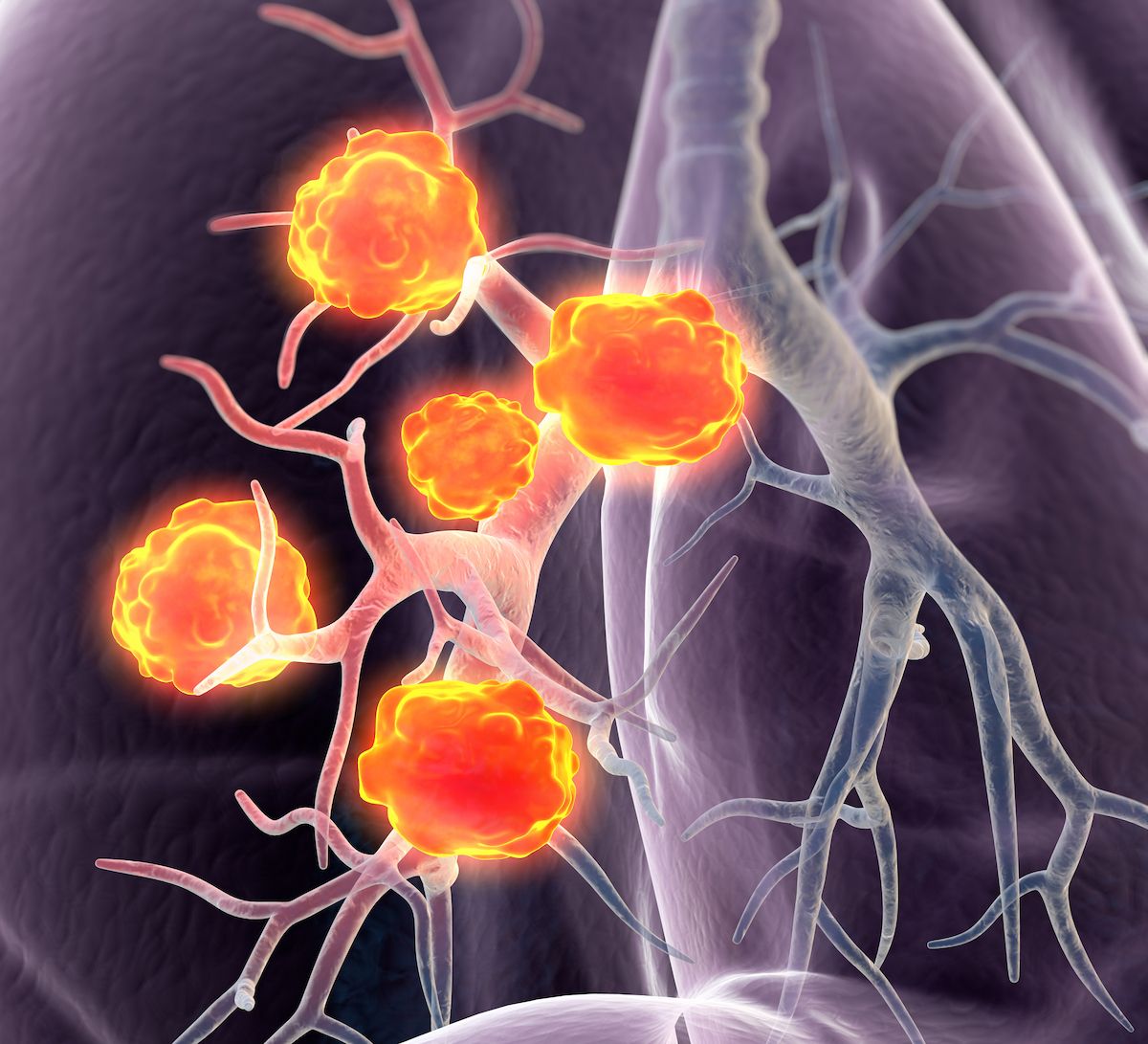FDA Sends CRL for Patritumab Deruxtecan in Advanced EGFR+ NSCLC
The complete response letter for patritumab deruxtecan is based on findings related to a third-party manufacturing site inspection.
The FDA previously granted priority review to the BLA for HER3-DXd as a treatment for EGFR-mutant NSCLC in December 2023. Supporting data for the application came from the phase 2 HERTHENA-Lung01 trial (NCT04619004).

The FDA has sent a complete response letter (CRL) for the biologics license application (BLA) for patritumab deruxtecan (HER3-DXd) as a treatment for adults with previously treated locally advanced or metastatic non–small cell lung cancer (NSCLC) harboring EGFR mutations, according to a press release from the developer, Merck.1
The agency submitted the CRL following issues associated with its inspection of a third-party manufacturing site for the agent. There were no problems related to the safety or efficacy data supporting HER3-DXd as a treatment for the aforementioned population.
“Patients with previously treated EGFR-mutated [NSCLC often [have] recurrence and have limited treatment options. We are committed to working with Daiichi Sankyo and the FDA to prioritize making patritumab deruxtecan available to these patients in need,” Marjorie Green, MD, senior vice president and head of oncology, Global Clinical Development at Merck Research Laboratories, said in the press release.1
The FDA previously granted priority review to the BLA for HER3-DXd as a treatment for EGFR-mutant NSCLC in December 2023.2 Supporting data for the application came from the phase 2 HERTHENA-Lung01 trial (NCT04619004).
According to updated findings published in Journal of Clinical Oncology, HER3-DXd yielded a confirmed objective response rate (ORR) of 29.8% (95% CI, 23.9%-36.2%) per blinded independent central review (BICR).3 Additionally, the median duration of response (DOR) was 6.4 months (95% CI, 4.9-7.8), with 43.3% of patients having a response that lasted for at least 6 months. Data also showed a median overall survival (OS) of 11.9 months (95% CI, 11.2-13.1).
Grade 3 or higher treatment-emergent adverse effects (TEAEs) affected 64.9% of those who received HER3-DXd. Common grade 3 or higher toxicities of this kind included thrombocytopenia (20.9%) and neutropenia (19.1%). Investigators noted that 40.4%, 21.3%, and 7.1% had dose interruptions, reductions, and discontinuations, respectively, following TEAEs.
“The results from HERTHENA-Lung01 provide compelling evidence of efficacy of patritumab deruxtecan in heavily pretreated patients with advanced EGFR-mutated [NSCLC],” lead study author Helena Yu, MD, an associate attending physician at Memorial Sloan Kettering Cancer Center, said in a press release on these findings.4 “The clinically meaningful efficacy observed across a broad range of HER3 expression and diverse mechanisms of EGFR tyrosine kinase inhibitor [TKI] resistance as well as the anti-tumor activity seen in patients with brain metastases, underscore the potential of patritumab deruxtecan to become an important treatment option for a population of patients with lung cancer who have limited treatment options.”
In the multicenter, open-label HERTHENA-Lung01 trial, patients were assigned to receive HER3-DXd at a fixed dose of 5.6 mg/kg intravenously every 3 weeks in arm 1 or at 3.2 mg/kg on cycle 1, day 1, 4.8 mg/kg on cycle 3, day 1, and 6.4 mg/kg of every subsequent cycle in arm 2.
The trial’s primary end point was ORR per BICR based on RECIST v1.1 criteria. Secondary end points included DOR, progression-free survival, disease control rate, time to response, OS, and safety.
Adult patients with disease progression on or following their most recent line of therapy—with previous treatment needing to include at least 1 EGFR TKI and 1 or more platinum-containing chemotherapy regimens—were eligible for enrollment on the trial. Having an ECOG performance status of 0 or 1 was another requirement for study entry, and patients with clinically inactive or treated asymptomatic brain metastases were able to enroll. Those with prior or current interstitial lung disease were excluded from enrollment.
References
- Patritumab deruxtecan BLA submission receives complete response letter from FDA due to inspection findings at third-party manufacturer. News release. Merck. June 26, 2024. Accessed June 27, 2024. https://tinyurl.com/mr46bnpe
- Patritumab deruxtecan granted priority review in the U.S. for certain patients with previously treated locally advanced or metastatic EGFR-mutated non-small cell lung cancer. News release. Merck. December 22, 2023. Accessed June 27, 2024. https://tinyurl.com/4srvkp7b
- Yu HA, Goto Y, Hayashi H, et al. HERTHENA-Lung01, a phase II trial of patritumab deruxtecan (HER3-DXd) in epidermal growth factor receptor–mutated non–small-cell lung cancer after epidermal growth factor receptor tyrosine kinase inhibitor therapy and platinum-based chemotherapy. J Clin Oncol. 2023;41(35):5363-5375. doi:10.1200/JCO.23.01476
- Patritumab deruxtecan demonstrated clinically meaningful and durable responses in patients with EGFR-mutated metastatic non-small cell lung cancer in HERTHENA-Lung01 phase 2 trial. News release. Daiichi-Sankyo. September 10, 2023. Accessed June 27, 2024. https://tinyurl.com/4y3n82m9